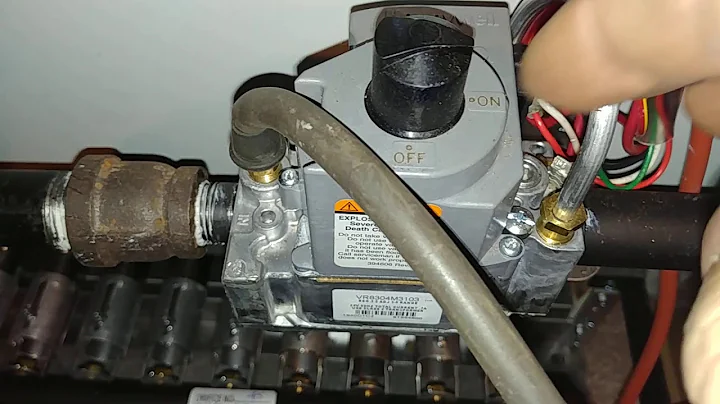Mastering Recessed Zipper Techniques for Professional Bag Finishes!
Table of Contents
- Introduction
- Anatomy of a Recessed Zipper
- Measuring the Width of the Recessed Zipper
- Drafting the Pattern Piece for the Recessed Zipper
- Amending the Lining Pieces
- Adding a Facing to the Bag
- Adjusting the Width and Length of the Recessed Zipper for Angled Backs
- Adjusting the Width and Length of the Recessed Zipper for Box Corners
- Conclusion
- Frequently Asked Questions (FAQs)
🧵 Introduction
In this tutorial, I will show you how to add a recessed zipper to a pattern that either opens or closes with a snap. This is a common technique used in bag making, and it allows for a clean and professional finish. By following these steps, you'll be able to add a recessed zipper to your own patterns with ease.
🧵 Anatomy of a Recessed Zipper
Before we begin, let's take a look at the anatomy of a recessed zipper. The recessed zipper sits slightly lower in the back of the bag, hence its name. It is stitched between the facing and the lining portion of your bag. The actual recessed zipper is made out of rectangles, with two external rectangles on each side of the zipper and two lining rectangles on the inner portion of your bag.
🧵 Measuring the Width of the Recessed Zipper
To determine how wide the recessed zipper needs to be, you should measure the gusset of your bag. For example, if your gusset is 9 centimeters (3.5 inches) wide and you want your bag to be square, then your recessed zipper should also be 9 centimeters (3.5 inches) wide. It's important to note that the recessed zipper should not be longer than the front panel of your bag.
🧵 Drafting the Pattern Piece for the Recessed Zipper
To create the pattern piece for the recessed zipper, you will need to draw a rectangle with a width equal to the desired width of the zipper and a length equal to the desired length of the zipper. Remember to add seam allowances to all sides of the rectangle. This pattern piece will be used to cut the zipper casing from both the external fabric and the lining fabric.
🧵 Amending the Lining Pieces
If your pattern doesn't have a facing and the lining is in one piece, you will need to amend the lining pieces to accommodate the recessed zipper. First, trace the original pattern pieces for the lining without seam allowances. Then, determine the width you want for the facing and draw a separate piece on the pattern. The remaining original lining piece will be the main portion of the lining. Add seam allowances to both the facing and the main lining pieces.
🧵 Adding a Facing to the Bag
To add a facing to your bag, cut out the facing pieces from the external fabric and attach them to the main lining pieces. Follow the instructions on your pattern for constructing the bag, but instead of sewing the recessed zipper and inserting it, you will now sew the facing and the main lining pieces separately.
🧵 Adjusting the Width and Length of the Recessed Zipper for Angled Backs
If your bag has angled side panels or a slightly angled back, you may need to adjust the width and length of the recessed zipper. Start by using the base panel as a reference point instead of the top edge of the side panel. Measure the width of the base panel and subtract the desired amount to make the recessed zipper shorter. Depending on the look you want, you can make the zipper casing narrower or wider.
🧵 Adjusting the Width and Length of the Recessed Zipper for Box Corners
For bags with box corners and no side gusset, you will need to measure the size of the box corner and determine how much of an opening you want on the finished bag. Follow the same process as before to draft the facing and the lining separately. Adjust the width and length of the recessed zipper based on your measurements.
🧵 Conclusion
Adding a recessed zipper to a pattern that either opens or closes with a snap can give your bags a professional and polished look. By following the steps outlined in this tutorial, you'll be able to easily incorporate recessed zippers into your own bag designs.
Frequently Asked Questions (FAQs)
Q: How wide should the recessed zipper be?
A: The width of the recessed zipper should be determined by the width of the gusset of your bag. Measure the gusset and make the recessed zipper the same width for a square-shaped bag.
Q: Can the recessed zipper be longer than the front panel?
A: No, the recessed zipper should not be longer than the front panel of your bag. It should be slightly shorter to ensure it can be closed properly.
Q: Can I adjust the width of the recessed zipper for different looks?
A: Yes, you can adjust the width of the recessed zipper to achieve different looks. A narrower zipper casing will result in a more closed appearance, while a wider zipper casing will create a more open look.
Q: How do I add a facing to the bag?
A: To add a facing to the bag, cut out the facing pieces from the external fabric and attach them to the main lining pieces. Follow the instructions for constructing the bag, but sew the facing and the main lining pieces separately.
Q: How do I adjust the recessed zipper for angled backs or box corners?
A: For angled backs, use the base panel as a reference point instead of the top edge of the side panel. Adjust the width and length of the recessed zipper based on your measurements. For box corners, measure the size of the box corner and determine the desired opening on the finished bag. Adjust the width and length of the recessed zipper accordingly.







